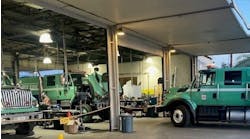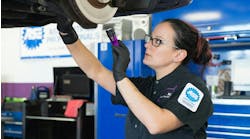Much has transpired since the last Economic Outlook column in April’s issue of Fleet Maintenance. Because there has been a great deal of progress on how the economic and public health aspects of COVID-19 are being handled, as well as several other developments that bear directly on the prospects for the trucking economy, the topics of Truckable economic activity (TEA), and DataMac will continue.
TEA is the MacKay & Company metric used to measure activity in the trucking economy. It is made up of five major components; here is what has happened to each of them during the recession and what their likely performance might be over the next several months.
The first and largest component of TEA is truckable consumption. There has been an almost complete recovery of activity in this area, as the various stimulus measures combined with the reopening of most venues where consumers spend their income has brought it back to near pre-COVID levels. The problem going forward will be solving some issues with the supply chain, especially at restaurants, where getting the staffing and food back up to levels that will support full occupancy is going to take some time. The news here has been good, however, and is expected to remain that way.
The next largest component of TEA is truckable investment, which includes items such as construction spending and the purchase of capital goods. Also included are business inventories. The news here has also been good with construction activity, especially residential construction activity which is rebounding quickly. As is the case with truckable consumption, there are some supply chain issues starting to impinge on activity. Manufacturers report shortages of parts; construction firms report skyrocketing materials prices, some of which are also associated with shortages. Over the balance of the year, activity is expected to continue to move ahead, but interruptions caused by supply chain issues are also anticipated.
Truckable imports and truckable exports make up the next two segments of TEA, and there are two different stories at work here. Imports have surged to the point where there are significant bottlenecks impeding the movement of goods off of ships and onto trucks and trains. There is simply not enough space in most ports, and there is a shortage of the chassis that are needed to move containers. Import growth, therefore, has slowed.
On the export side, there are two problems. The first is the continued uncertainty of the demand for our exports as our major trading partners continue to fight the effects of COVID-19. The second problem is a corollary to the import issue. Clogged ports lead to backlogs on exports as those containers cannot get loaded onto ships because the ships cannot unload their cargoes. Exports are expected to grow slowly over the balance of the year.
The final component of TEA is truckable government. Again, there are two stories. The first is at the federal level where the current budget, as well as the proposed infrastructure program, are adding to activity and will continue to do so for the rest of the year. On the state and local level, things are less clear. Because state and local governments are required to maintain balanced operating budgets, and because the full impact of COVID-19 on state and local revenues is not yet known, it is difficult to predict what the next set of budgets is going to look like. Most states run on fiscal years that end in the middle of the summer, so there should be news on this before too long.
The general expectation is for TEA to continue to expand through the rest of 2021. There will be some bumps, but those will mostly be the result of the multiple supply chain issues.
Aligning with the strength noted in TEA, MacKay & Company recently released their third quarter utilization report, DataPulse. Highlighting utilization of medium and heavy duty vehicles and trailers by vocation, fleet size, and region, fleets report above-average utilization in the first quarter but are cautiously optimistic moving into the later part of 2021. As the U.S. moves from winter into spring, off-highway vocations such as construction and agriculture are in full swing and report a higher pace than initially expected. Capacity remains very tight in the general long-haul market with both spot-rates and contract prices continuing to increase by as much as 13 percent. MacKay & Company will continue to monitor the recovery and whether or not these high levels of utilization will be sustainable.
MacKay & Company specializes in market research for commercial trucking, construction equipment, and agricultural machinery. The company provides strategic research and analysis to vehicle and component manufacturers, distribution and service channels, industry associations, and private equity firms. With a long career managing portfolios and coordinating domestic economic forecasting programs, Dieli began RDLB, Inc. in 2001. In this role, Dieli serves as an advisor to many firms in the trucking, consulting, and financial services sectors. He is also an economist with MacKay & Company.




